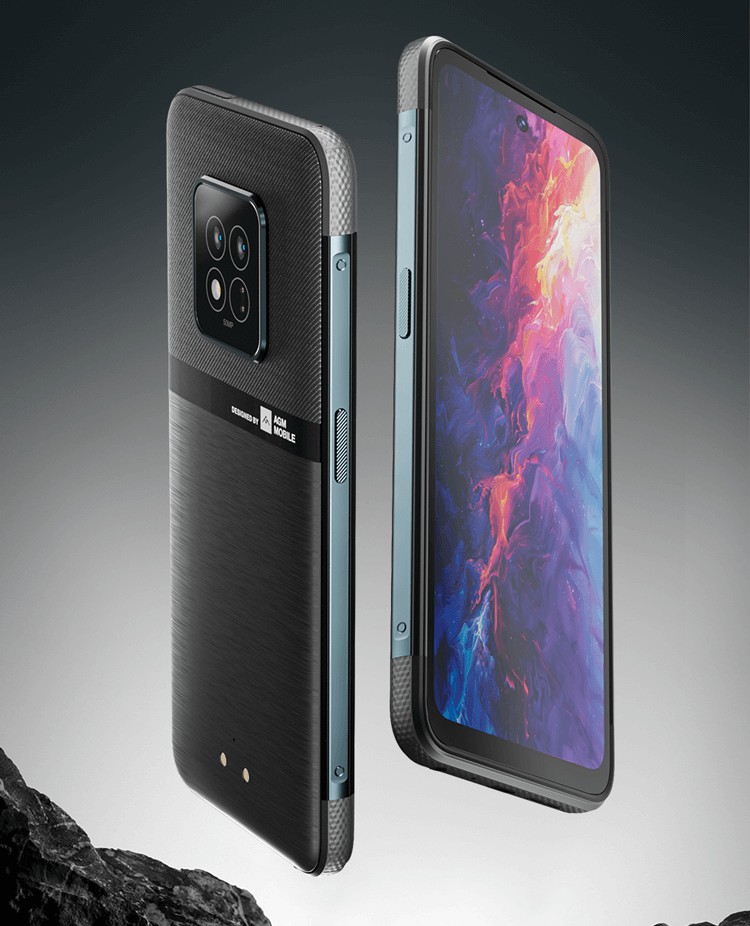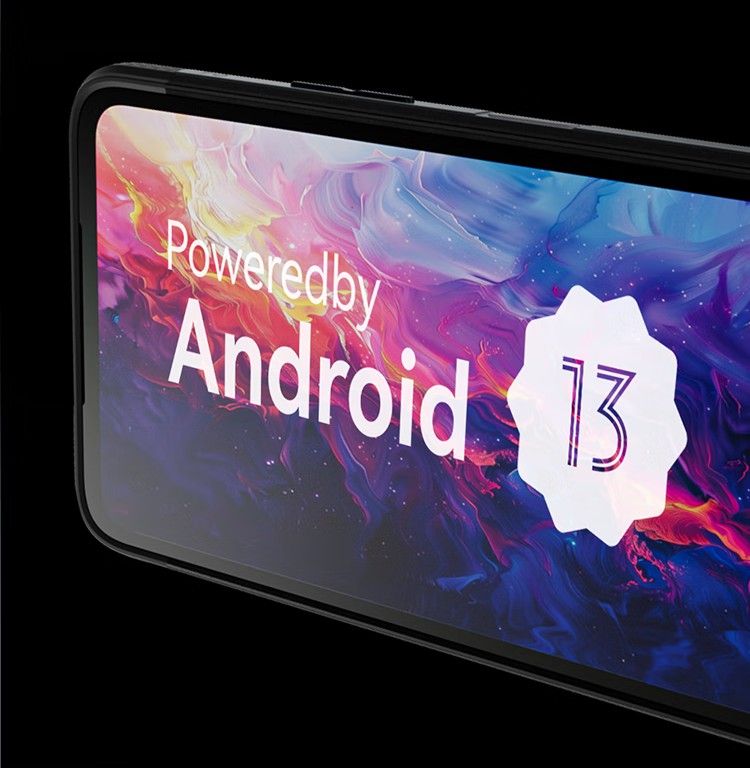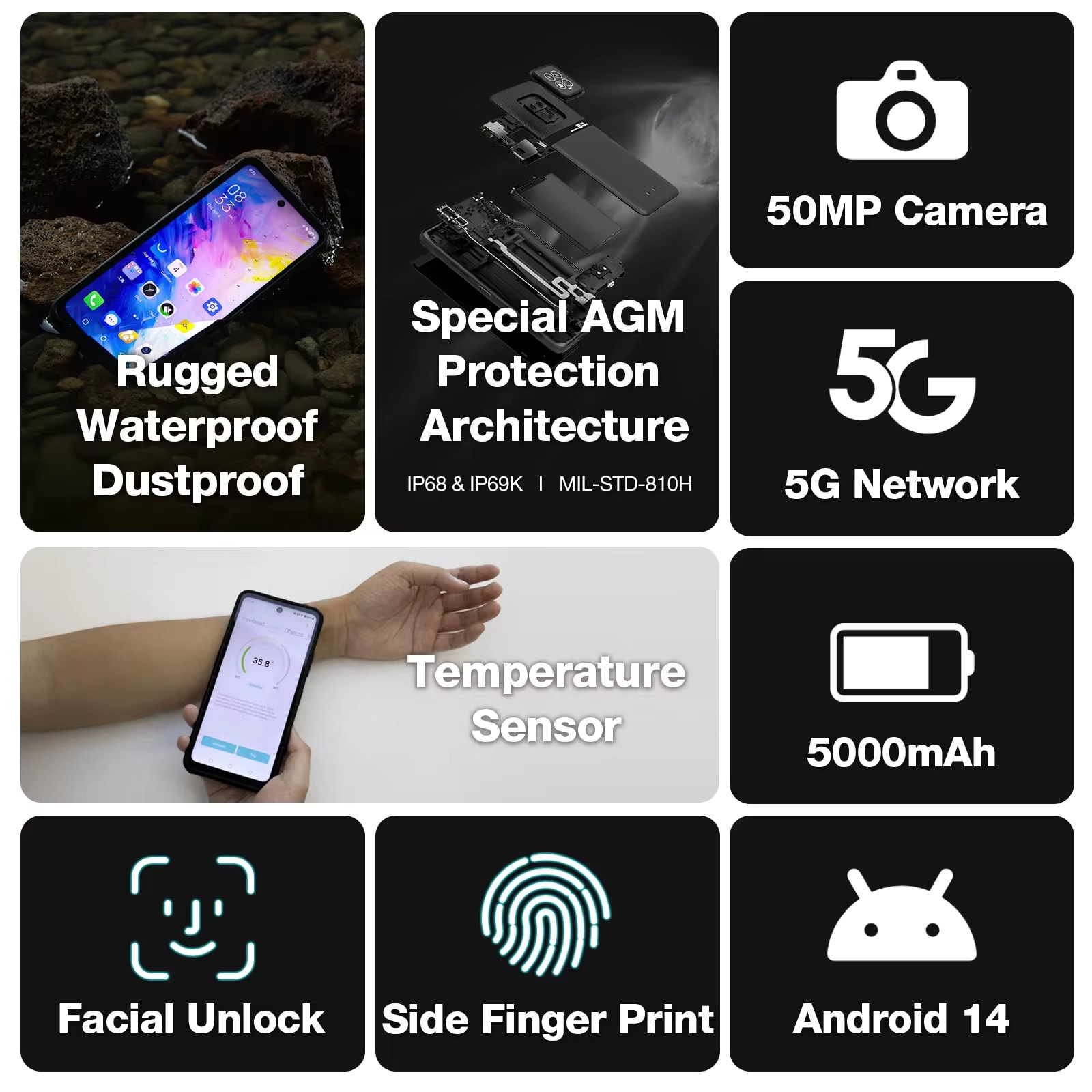






The AGM X6 is a smartphone built for those who need a device that can withstand the elements. It boasts IP68 and IP69K certifications, making it water and dust resistant, and even meets the MIL-STD-810H standard for shock resistance. This means it can handle drops, extreme temperatures, and harsh conditions.
Note that the AGM X6 is available in three variations: The first two is the AGM X6 Night Vision and AGM X6 Thermometer Edition. These two has the same design and looks, but while the first is given a dedicated night camera, the later gets a dedicated thermal sensor which is good for heat and temperature measurement. The third model is the AGM X6 Zero Edition, details of which can be found Here.
The phone features a large 6.78-inch IPS LCD display with a sharp 1080 x 2460 resolution. Under the hood, it runs on the Android 13 operating system and is powered by the Unisoc Tiger T750 processor, paired with 8GB of RAM and 256GB of storage. Storage can be further expanded up to 512GB via a microSD card.
For capturing memories, the AGM X6 comes equipped with a 50MP main camera with PDAF, a dedicated 20MP night vision camera with infrared LED light, and a 16MP front-facing camera for selfies. It also supports 2K and 1080p video recording at 30fps.
Connectivity options include Bluetooth 5.0, Wi-Fi 2.4G and 5G, and USB Type-C 2.0. Navigation is supported by GPS, GLONASS, BeiDou, Galileo, and QZSS. The phone packs a long-lasting 5000mAh battery with 18W fast charging capabilities.
The AGM X6 comes in a sleek grey color and offers a dedicated customizable button for added convenience. The table below contains the full specifications of the device.
| Launch This refers to the date when this device was officially introduced into the market. | 2024, May / Release 2024, May |
| Brand / Model These are key identifiers that indicate the manufacturer or company that produces this smartphone, and the specific model of the phone. | AGM / X6 |
| 2G Bands 2G refers to the second generation of cellular technology and includes various frequency bands for basic voice and text communication. | GSM band 850 / 900 / 1800 / 1900 - SIM 1 and SIM 2 |
| 3G Bands 3G refers to the third generation of cellular technology, encompassing different frequency ranges for faster data speeds, mobile internet, and multimedia capabilities. | 3G band 1 / 2 / 4 / 5 / 8 |
| 4G Bands 4G refers to the fourth generation of cellular technology, operating in specific frequency bands to provide significantly faster data speeds, supporting high-definition video streaming and advanced applications. | LTE band 1 / 2 / 3 / 4 / 5 / 7 / 8 / 12 / 17 / 18 / 19 / 20 / 25 / 26 / 28A / 28B / 38 / 39 / 40 / 41 / 66 |
| 5G Bands 5G refers to the fifth generation of cellular technology, utilizing a wide range of frequency bands, including sub-6 GHz and millimeter wave, to deliver ultra-fast data speeds, low latency, and connectivity for innovations like IoT and augmented reality. | 5G band |
| Ruggedity This indicates the device's durability and ability to withstand harsh conditions or impacts. It is a very popular term used with tough or rugged phones. IP68/IP69K are international ratings that measure a smartphone's resistance to dust and water. MIL-STD-810H is a military standard that sets criteria for the environmental and durability testing of electronic devices. It means this device has undergone various tests to demonstrate its resilience in challenging conditions, such as extreme temperatures, humidity, vibration, and shock. |
IP68 / IP69K / MIL-STD-810H - Water / dust resistant / shock resistance |
| Dimensions / Weight: This refers to the physical size and weight of the device, measured in millimeter (mm) and grams (g) respectively. | 174.0 x 79.0 × 9.0 mm / 258 grams |
| SIM SIM stands for "Subscriber Identity Module." It is a small card, typically inserted into a slot in a mobile phone, that contains important information for connecting the device to a mobile network. SIM cards can come in various sizes, including standard SIM, micro SIM, nano SIM, or even electronic (eSIM), depending on the phone's design. | Hybrid Dual SIM (Nano-SIM, dual stand-by) |
| Screen Display refers to the screen or visual interface of the device. It includes details such as screen size, resolution, and technology (e.g., LCD, OLED, AMOLED). | 6.78-inches / IPS LCD touchscreen / 16M colors |
| Resolution Screen Resolution refers to the number of pixels that make up the display screen and is typically expressed as a combination of horizontal and vertical pixel counts (e.g., 1920 x 1080, 2560 x 1440, or 3840 x 2160). The screen resolution determines the level of detail and sharpness of the visual content displayed on the smartphone's screen. Higher resolutions generally result in crisper and more detailed images and text | 1080 x 2460 pixels / 20:9 aspect ratio / 393 PPI |
| Features Camera features encompass various functionalities and capabilities that enhance the device's photography and videography experience. These features can include Optical Image Stabilization (OIS) Panorama, HDR, Ai Mode, Night Mode, Portrait Mode, etc. | Scratch resistant glass (unknown) |
| OS This is the Operating System. It refers to the software platform that runs on the smartphone and manages the device's hardware and software resources. Common smartphone operating systems include Android (developed by Google), iOS (developed by Apple). | Google Android 14 |
| Chipset This refers to the integrated circuit that serves as the device's central processing unit (CPU). It plays a pivotal role in the smartphone's performance, speed, and energy efficiency. |
Unisoc Tiger T750 (6 nm) - Octa-core (2x2.0 GHz Cortex-A76 & 6x1.8 GHz Cortex-A55) - Mali-G57 MC2 GPU |
| Memory This encompasses two components: storage capacity and RAM (Random Access Memory). Storage capacity, typically measured in gigabytes (GB) or terabytes (TB), dictates how much internal space is available for apps, files, and media storage. RAM, measured in gigabytes (GB), is temporary memory crucial for multitasking and app performance, with more RAM generally leading to smoother operation and faster task-switching capabilities. |
8GB RAM + 256GB ROM (LPDDT4x / UFS) - SD-card support up to 512GB (uses SIM 2 slot) |
| Main The main camera, also known as the rear camera, is the primary camera on the back of the smartphone. It is typically used for capturing photos and videos in various scenarios and is often the more powerful and versatile camera on the device |
Main: 50MP. PDAF NightVision: 20MP Night Vision; Infrared LED light |
| Selfie The selfie camera, also known as the front-facing camera, is the camera on the front of the smartphone, primarily used for capturing selfies and video calls | 16MP | No LED flash |
| Features Camera features encompass various functionalities and capabilities that enhance the device's photography and videography experience. These features can include Optical Image Stabilization (OIS) Panorama, HDR, Ai Mode, Night Mode, Portrait Mode, etc. | 2K/1080p@30fps video recording / LED Flash |
| Connectivity This encompasses the device's ability to connect and communicate with other devices and networks. It includes features such as cellular connectivity, Wi-Fi, Bluetooth, NFC (Near Field Communication), and USB connectivity options. | Bluetooth 5.0 A2DP / WiFi 2.4G-5G / USB Type-C 2.0 |
| Navigation Navigation refers to the device's ability to determine and display location information and provide directions to users. This functionality is usually powered by Global Positioning System (GPS) technology. | A-GPS, GLONASS, BeiDou, Galileo, QZSS |
| Sensors This refers to the various built-in sensors that enable the device to gather information from its environment and interactions. Common sensors found in rugged smartphones may include fingerprint sensor, light sensor, barometer sensor among others. | Fingerprint scanner (side-mounted), accelerometer, proximity, compass |
| Battery This section refers to the device's power source and its related specifications. This typically includes details such as the battery capacity, measured in milliampere-hours (mAh) or watt-hours (Wh), and it charging details. | Li-Po 5000mAh, non-removable with 18W fast charger |
| Others This is a catch-all category that includes various additional features, specifications, or capabilities that don't fall under the major categories like display, camera, memory, or connectivity. |
Grey color Dedicated customizable button |
These specifications were entered manually, hence we CANNOT guarantee 100% accuracy. Also, that your device is listed on this website DOES NOT call for reckless usage! It is crucial to exercise due diligence, as we cannot be held responsible for any damage to your device due to overconfidence in it built quality.
Leave a Reply